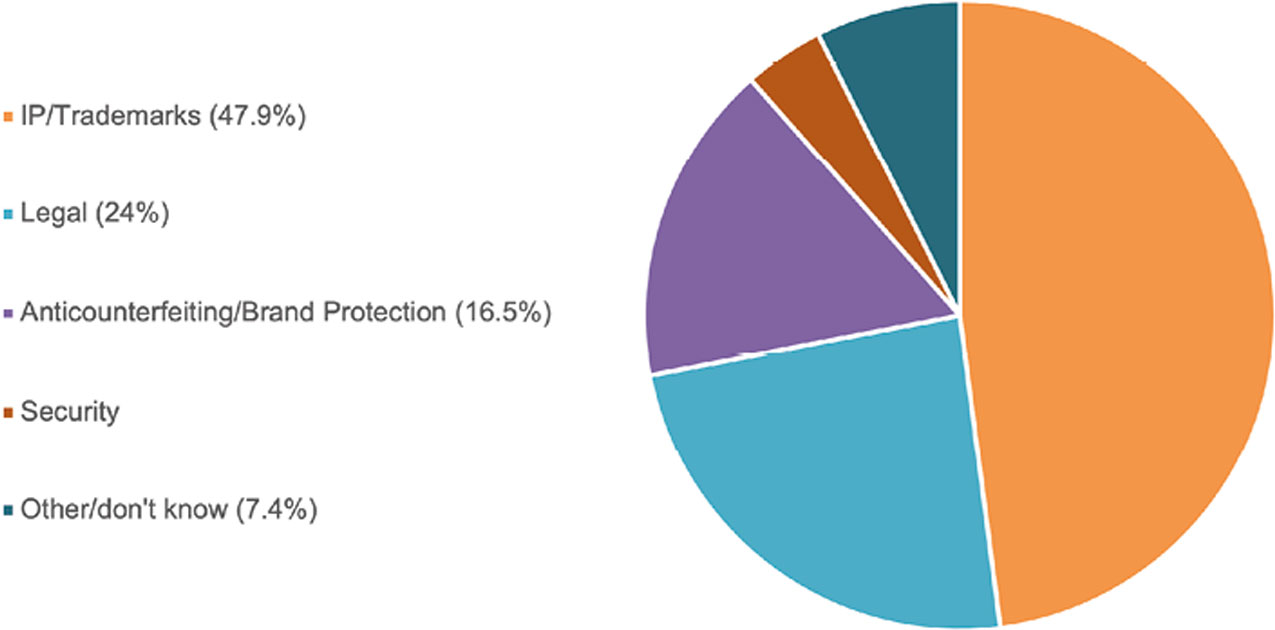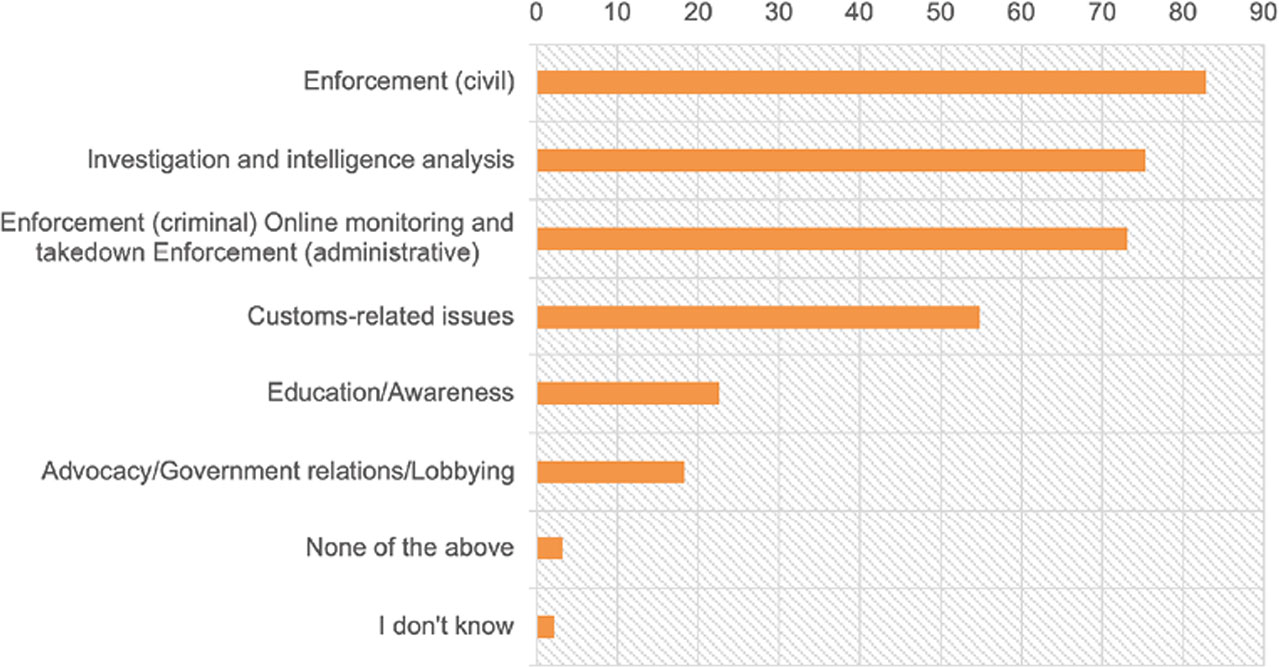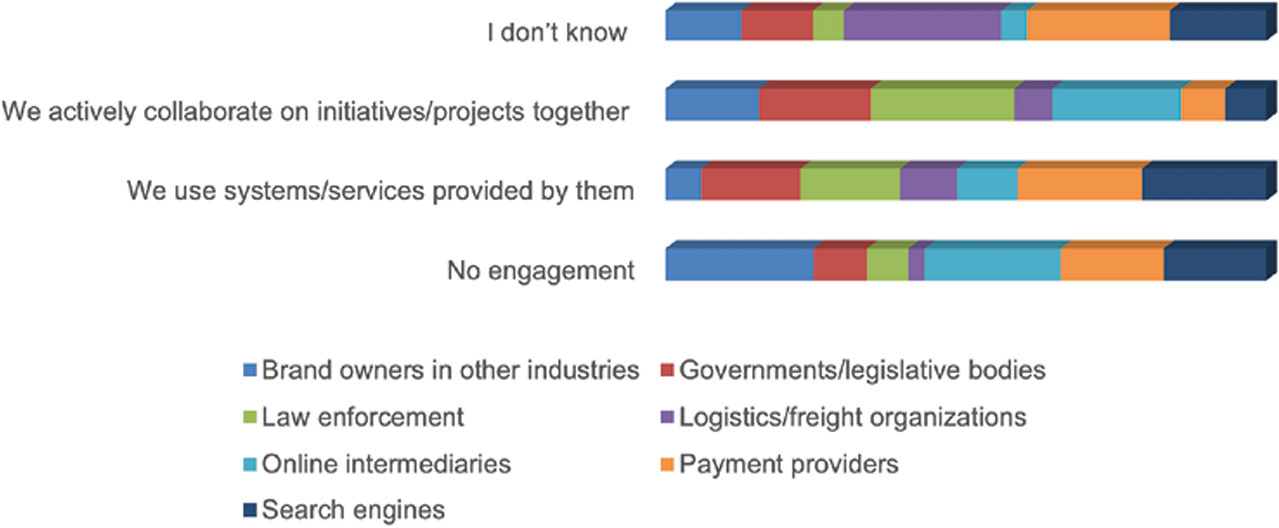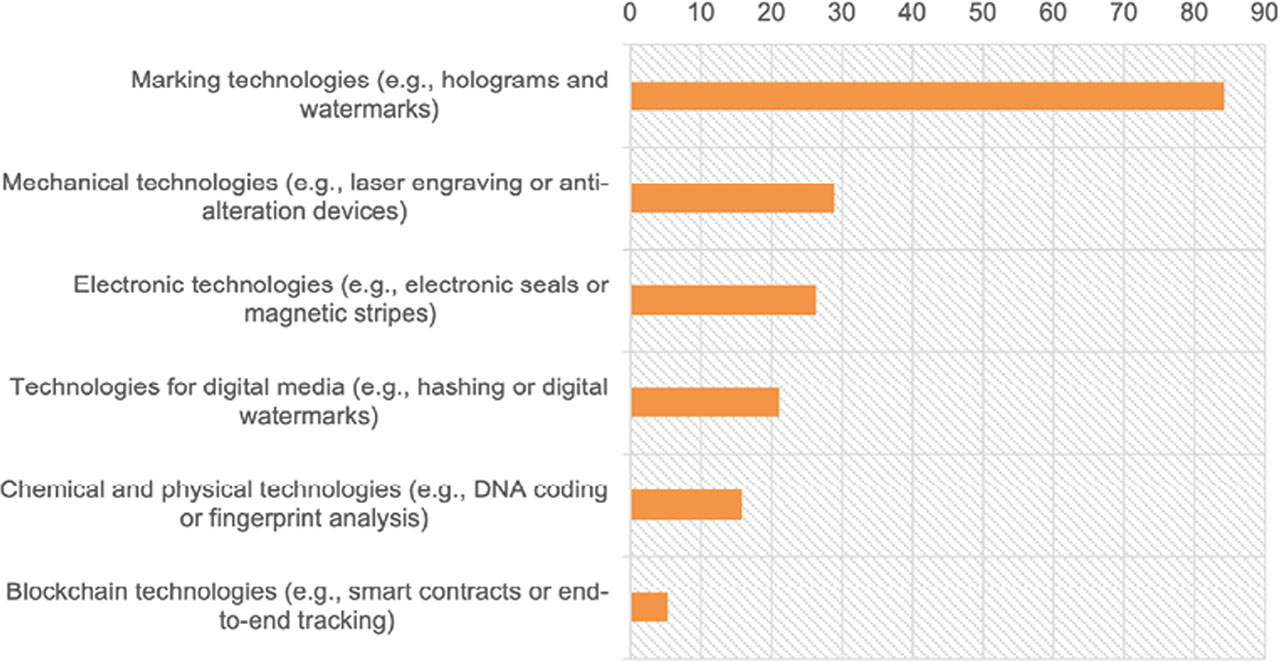Evaluating corporate anti-counterfeiting efforts after the pandemic

This is an Insight article, written by a selected partner as part of WTR's co-published content. Read more on Insight
“Anti-counterfeiting efforts have unfortunately become a cost of doing business.” This was a comment left by a respondent participating in an International Trademark Association (INTA) survey for its recently released 2023 Anti-counterfeiting Benchmarking Report. It is aptly put and highlights how the need for companies to engage in anti-counterfeiting efforts is now unavoidable. No doubt, the last three years have introduced various economic and technological changes that have greatly affected the global counterfeiting landscape.
The evolving environment that brands operate in today can be a catalyst for companies and law firms to increase the resources they devote to anti-counterfeiting, embrace collaboration and experiment with new technologies. Drawing on the Anti-counterfeiting Benchmarking Report, we explore below the innovative methods companies can employ to fight counterfeiting in this new climate.
We will consider how counterfeiting itself has evolved in recent years and how companies are responding, highlight unexplored and under-explored opportunities for companies to adapt to the new counterfeiting landscape and provide some guidance for how companies can employ customised anti-counterfeiting solutions.
Counterfeiting on the rise
In the final quarter of 2022, INTA surveyed its international corporate membership In-house legal teams at geographically diverse companies of various industries and sizes. The survey revealed that counterfeiting is becoming a pernicious issue for most companies. Nearly two-thirds of respondents observed that anti-counterfeiting work has increased since the start of the pandemic. While respondents gave various reasons for this, over three-fifths directly attributed the increase in the volume of anti-counterfeiting work to the pandemic and the economic downturn. As one respondent lamented: “[There has been] a spectacular increase of fraud attempts online during the pandemic.” Recent economic, political and technological changes such as supply chain crises, the growth of online marketplaces, the legalisation of marijuana in certain US states, and more, have also created a favourable environment for counterfeiters to expand their operations.
Companies prioritise counterfeiting… but face constraints
The large majority of companies believe that counterfeits have become a larger issue than five years ago. More than 60% of respondents said counterfeits are either a much larger or slightly larger issue now than five years ago. Less than 8% say counterfeiting is a slightly smaller or much smaller issue. Companies of all types are working to step up to the evolving counterfeiting challenges. However, less than half of respondents classified their anti-counterfeiting programme as “very impactful”.
Why are companies unable to successfully combat counterfeiting when they recognise the severity of the issue? In short, companies are by-and-large limited by budgetary constraints. Investments in both financial and human capital investments for anti-counterfeiting initiatives are lower than desired for most companies. The survey observed startling percentages: slightly more than half of respondents argued that their organisation invested too little money in anti-counterfeiting initiatives. Close to 60% of respondents believed that their company invested insufficient human resources into anti-counterfeiting efforts.
Increasing resources
The most straightforward solution is the need to invest more resources and staff into anti-counterfeiting activities. This would help with the workload that has increased because of the pandemic. One survey respondent, who in fact perceived counterfeiting decreasing in their organisation’s priorities, claimed that this was only due to their “heavy and constant investment in [their] anti-counterfeiting program[me] over the last five years.”
One way that resources may be increased is to have a dedicated anti-counterfeiting department with the ability to set the budget for anti-counterfeiting initiatives. The status quo presented in the Anti-counterfeiting Benchmarking Report was that the departments responsible for the anti-counterfeiting budget often do not engage in anti-counterfeiting activities. In addition, anti-counterfeiting responsibilities are at present often shared by multiple departments, which may increase hurdles to efficiency in collaboration.
Indeed, organisational changes can increase the ability of organisations to fight counterfeiters. One survey respondent suggested that hiring an IP counsel brought visibility to online and offline counterfeiting threats. Having dedicated teams for individual brands can also help organisations better allocate resources to anti-counterfeiting. Another survey respondent noted that, “once the team began focusing entirely on our brand, we saw an increase in counterfeit detections which in turn has increased our efforts in this area.”
Chart 1: Department primarily responsible for anti-counterfeiting

Source: 2023 Anti-counterfeiting Benchmarking Report (INTA)
However, respondents expressed that extreme increases in anti-counterfeiting budget and large growth in personnel working on anti-counterfeiting initiatives were unlikely. When asked about plans for the next one to three years, about four out of 10 respondents said they expect investment in money and human resources to remain the same, while slightly fewer said they expect slight increases.
Outsourcing activities
With the internal resource constraints in mind, organisations also rely heavily on outside counsel and other service providers to implement their anti-counterfeiting strategies. More than half of the survey respondents said their organisation outsources key anti-counterfeiting activities.
While advocacy and government relations are less likely to be contracted out, organisations often outsource enforcement and customs-related issues. According to one respondent, protection provided by Customs at the borders was cited as a key element of the organisation’s anti-counterfeiting strategy. Interestingly, this respondent also said that when the protection provided decreased for political reasons, the organisation was less able to fight counterfeiting.
Table 1: Outsourcing of activities

Source: 2023 Anti-counterfeiting Benchmarking Report (INTA)
Collaborating
One way to be resourceful in anti-counterfeiting is to collaborate with other stakeholders – and organisations are doing just this. Key partners include other brand owners (of the same and other industries), legislative bodies, law enforcement, logistics organisations, online intermediaries, payment providers and search engines. Half of the survey respondents described their approach here as a mix of reactive and proactive collaboration, with the former coming about following an issue or event that relates to all parties and the latter being mostly unrelated to specific issues or events. Of the rest, slightly more described collaboration as reactive rather than proactive.
The data suggests that in-house legal teams work closely with law enforcement and government/legislative bodies. However, collaboration with brand owners in their same industry, brand owners in other industries, logistics/freight organisations, and payment and search engines is lacking. Just over half of all respondents said their organisation collaborates with other brand owners in anti-counterfeiting matters either frequently or very frequently, while a further two-fifths collaborate less often. In addition, more than one third of respondents reported no collaboration with brand owners in other industries.
A similar proportion said they do not collaborate with logistics/freight organisations and payment providers. Moreover, information about whether and to what extent in-house legal teams are collaborating with other stakeholders to fight counterfeiting remains low. Survey respondents expressed a high degree of uncertainty about whether they collaborated with various stakeholders. Reasons given for not collaborating include a lack of access to people in charge of anti-counterfeiting activities and lack of awareness about opportunities for collaboration.
Chart 2: Engaging with stakeholders

Source: 2023 Anti-counterfeiting Benchmarking Report (INTA)
Responding to the survey question, “What do you think has caused the issue of counterfeits to decrease in your organisation’s priorities?” multiple participants emphasised relationships with stakeholders. One respondent declared that: “Collaboration with online platforms has proven to be the most successful way to combat counterfeiting online.” This suggests that, in certain situations, collaboration with others can have a significant impact even when increasing resources is not feasible.
INTA provides a forum for collaboration among various stakeholders involved in combating counterfeiting. The Association’s global anti-counterfeiting network includes various external stakeholders, including:
- industry, which can play a key role in helping governments better understand the practical implications of policy and legislative decisions;
- police, prosecutors and the judiciary on the enforcement front;
- intermediaries and online marketplaces;
- investigators hired by brand owners to identify counterfeiters and to collaborate with police; and
- legislators, working to strengthen anti-counterfeiting laws and empower enforcement officials.
The Anti-counterfeiting Benchmarking Report survey asked what INTA could do to support corporate members’ anti-counterfeiting and brand-protection efforts. Respondents called for increased cooperation with each other and with additional key stakeholders, especially in the e-commerce realm.
Because of the conservative predictions of large-scale changes in budgetary increases or technology uptake, there exists a need for creative and proactive solutions to combat the growing threat of counterfeiting. As highlighted, for organisations who believed their anti-counterfeiting programme to be impactful, stakeholder engagement made a difference. Most organisations plan to engage with a variety of stakeholders in the future. However, there is also a degree of uncertainty about whether engagement will occur, especially among logistics/freight organisations, payment providers and search engines. To strengthen counterfeiting initiatives, it would be beneficial for organisations to have plans in place to collaborate with a multitude of stakeholders. Especially as counterfeits move to new spheres, like online marketplaces, brands must constantly evaluate if they are collaborating with the correct partners with sufficient frequency.
Key hurdles to collaboration include lack of access to people in charge of anti-counterfeiting activities and lack of awareness about opportunities for collaboration. Brand owners—and indeed all stakeholders—are encouraged to be more proactive in reaching out to each other. INTA is proud to provide a variety of venues for different stakeholders to come together, to benchmark and collaborate. This includes at the Anti-counterfeiting Workshop that takes place every year as part of the annual meeting.
Adopting new technologies
Authentication technology can be an indispensable anti-counterfeiting tool, especially for those operating with budget and resource constraints. Traditional technologies, based on marking, mechanics or electronics, proved to be most popular types used for authenticating goods and services among survey respondents, while chemical/physical technologies and those using blockchain are used by very few respondents.
Table 2: Types of authentication technology used

Source: 2023 Anti-counterfeiting Benchmarking Report (INTA)
Dramatic changes in technology uptake are unlikely to occur: less than one fifth of respondents claimed that their organisation had concrete plans to increase their technology uptake in the next one to three years. Moreover, 30% of respondents mentioned only vague plans to institute additional anti-counterfeiting technology in the next one to three years. Many respondents were unsure on this front – more than a quarter of respondents said they were not aware of plans to institute additional anti-counterfeiting technology in the next one to three years.
While organisations are using technology to combat counterfeiting, brand owners will likely have to become more sophisticated in using and developing anti-counterfeiting technology tools, including those based on blockchain and AI, to combat growing and increasingly sophisticated threats.
Customisable solutions
It is clear that anti-counterfeiting efforts have become a cost of doing business. Many companies are responding by allocating significant resources to fight counterfeits, utilising technology and working closely with key stakeholders.
However, the ever-increasing sophistication of counterfeiters means that more must be done to combat the scourge of fake goods entering the market. Unfortunately, the survey suggested that many organisations do not foresee extreme increases in anti-counterfeiting budgets and/or large growth in personnel working on anti-counterfeiting initiatives. Additionally, dramatic changes in technology uptake are unlikely to occur.
At the same time, anti-counterfeiting strategies are not a one-size-fits all effort. Solutions must be customised. Companies must consider how their anti-counterfeiting strategies can fit the unique characteristics of their industry sector, their geographic region, the size of their organisation and more.
Companies must embrace creative solutions such as increasing how frequently they collaborate with external parties, utilising new and unique technologies, and allocating budgets to solutions customised to the specific circumstances they find themselves in. If these solutions are employed, the changing economic and technological landscape can serve as a catalyst for companies to develop new anti-counterfeiting strategies and for law firms to develop new offerings for their clients. One survey respondent put it this way: “We need a paradigm shift amongst all stakeholders. Unless and until that happens, our current efforts will not yield enough results.”
INTA’s 2023 Anti-counterfeiting Benchmarking Report provides a detailed analysis of how companies, different in type, size and location, are working to tackle the issue. Findings are segmented to show trends among groups by organisation size, geograph, and more. By seeking out solutions that fit their individual characteristics, organisations can design more effective anti-counterfeiting programmes in the new and ever-changing counterfeiting landscape.


